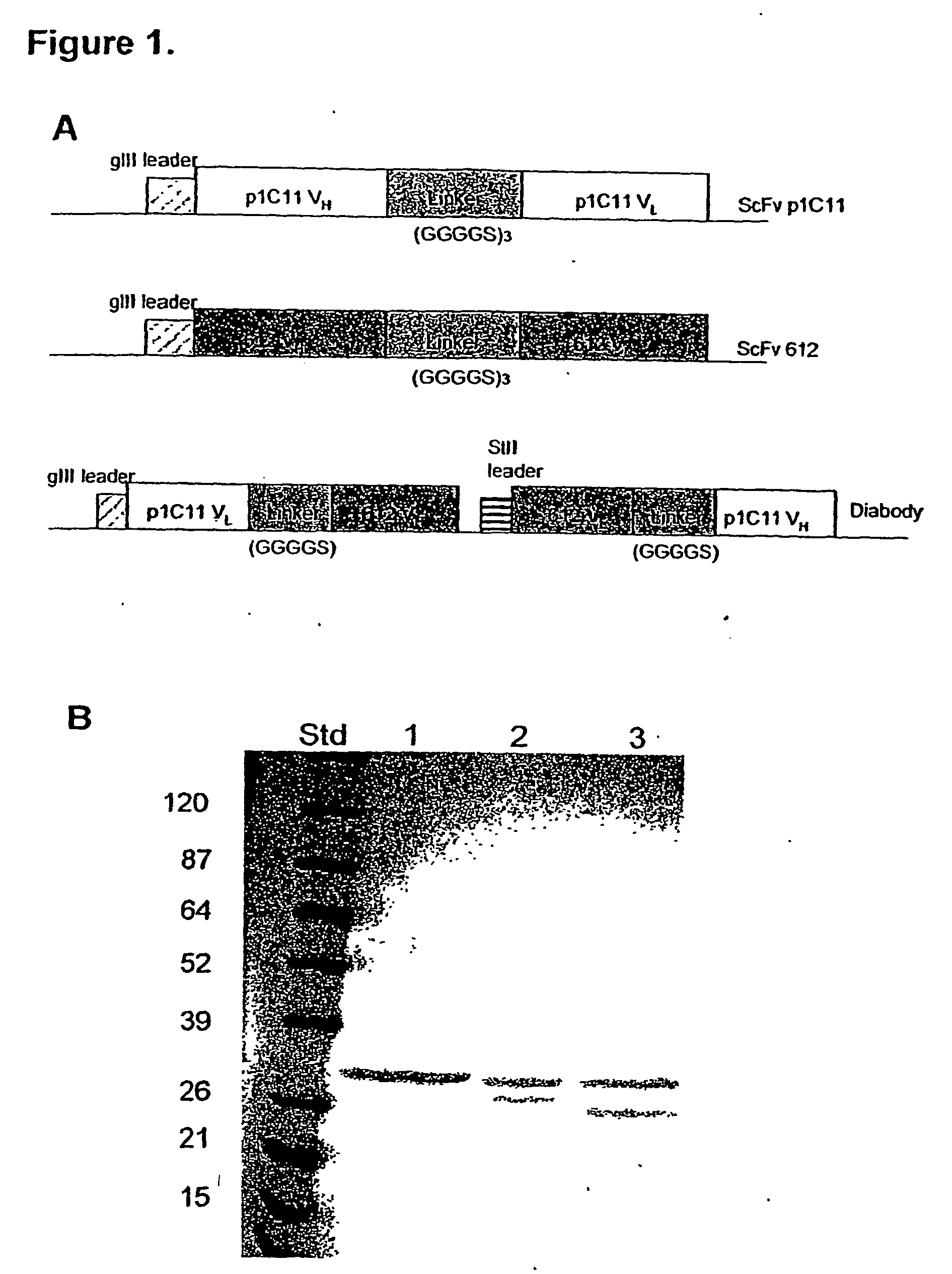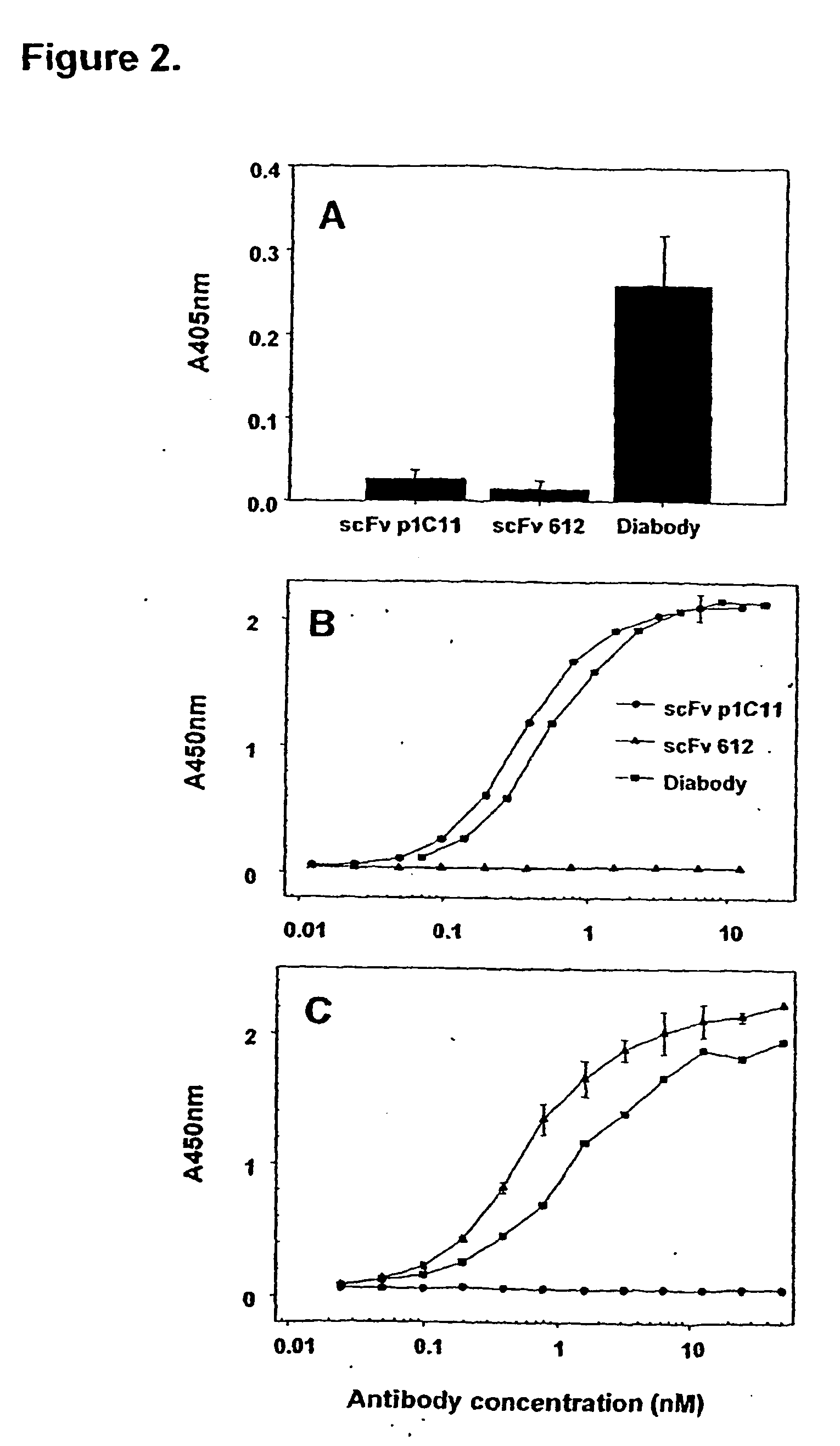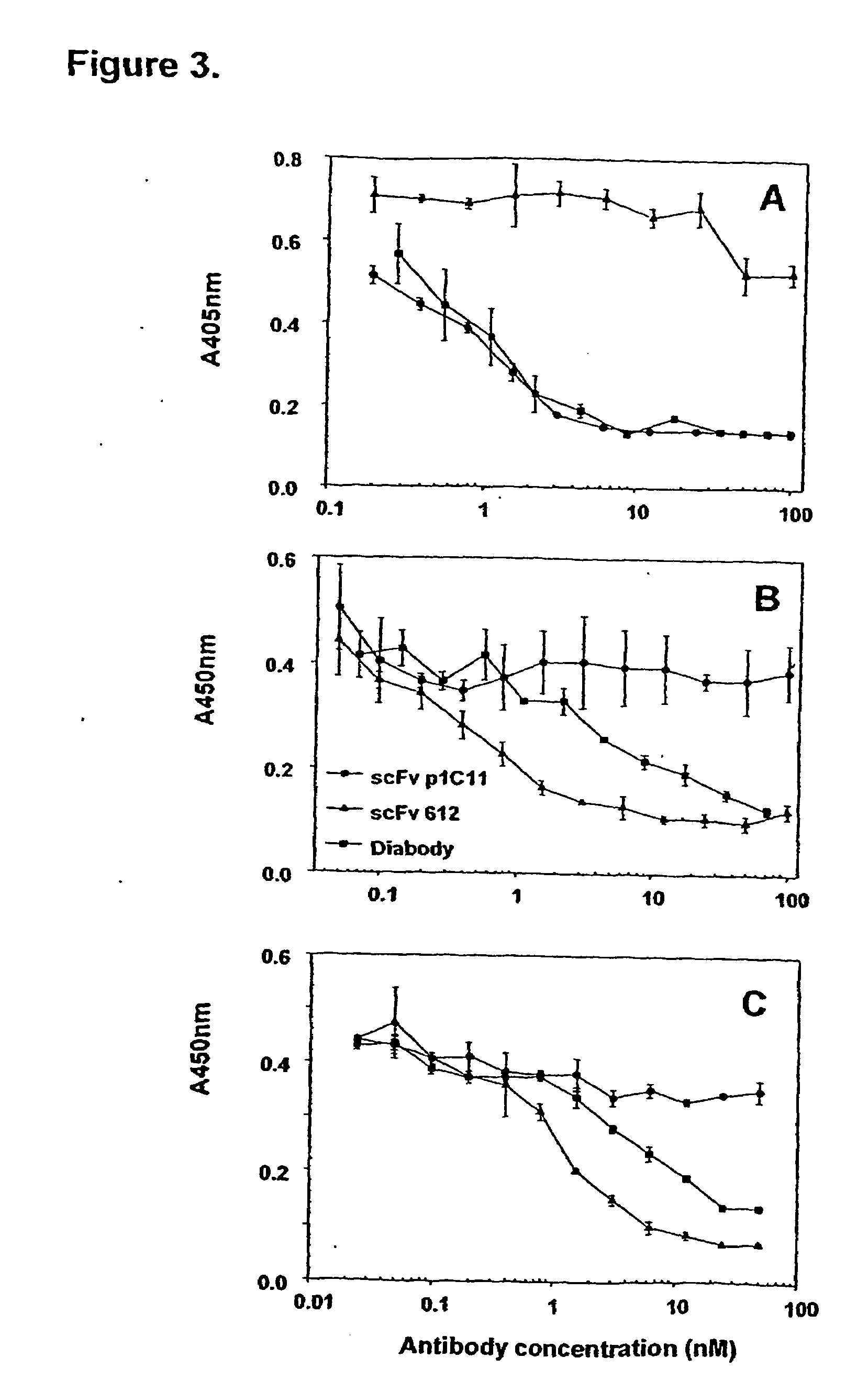Bispecific antibodies that bind to vegf receptors
a technology of vegf receptors and antibodies, which is applied in the field of bispecific antigen-binding proteins, can solve the problems of flt-1 null embryos failing to develop normal vasculature, affecting broad clinical evaluation, and lack of efficient production methods, so as to block interaction, block dimerization of vegf receptor proteins, and more potent inhibition of vegf-stimulated cellular functions
- Summary
- Abstract
- Description
- Claims
- Application Information
AI Technical Summary
Benefits of technology
Problems solved by technology
Method used
Image
Examples
example 1
Materials and Methods
[0073]Cell lines.
[0074]A hybridoma cell line (ATC No. PTA-334) producing the anti-Flt-1 antibody, Mab6.12 (IgGl, κ), was established at ImClone Systems Incorporated (New York, N.Y.) from a mouse immunized with a recombinant form of the receptor. Primary-cultured human umbilical vein endothelial cells (HUVEC) were obtained from Dr. S. Rafii at Cornell Medical Center, New York, and maintained in EBM-2 medium (Clonetics, Walkersville, Md.) at 37° C., 5% CO2. The leukemia cell lines, HL60 and HEL, were maintained in RPMI containing 10% of fetal calf serum and grown at 37° C. with 5% CO2.
Proteins and Antibodies.
[0075]The soluble fusion protein KDR-alkaline phosphatase (AP) was expressed in stably transfected NIH 3T3 and purified from cell culture supernatant by affinity chromatography using immobilized monoclonal antibody to AP as described by Lu, D., et al., 2000, J. Biol. Chem., 275:14321-14330. VEGF165 protein was expressed in baculovirus and purified following th...
example 2
Anti-KDR x Anti-Flt-1 Diabody
Diabody Structure.
[0099]An anti-KDR x anti-FIt-1 diabody made according to Example I was purified and analyzed by SDS-PAGE. The two component polypeptides were resolved under the electrophoretic conditions and gave rise to two major bands with mobility close to that anticipated (FIG. 1B); the lower band represents the first polypeptide (m.w., 25179.6 daltons), and the upper band correlates with the second polypeptide with E-tag (m.w., 26693.8 daltons) (FIG. 1A).
Dual Specificity.
[0100]A cross-linking assay to investigate whether the anti-KDR x anti-Flt-1 diabody was capable of simultaneously binding to both of its target antigens. To test the capability of the Flt-1-bound diabody to capture soluble KDR, the diabody was first allowed to bind to immobilized Flt-1, followed by incubation with KDR-AP. As shown in FIG. 2A, the diabody, but not the parent monospecific scFv, efficiently cross-linked the soluble KDR to the immobilized Flt-1, as demonstrated by th...
example 3
Inhibition of VEGF-Induced Migration of Leukemia Cells and Mitogenesis of HUVEC.
[0104]The diabody was first-tested for its activity in inhibiting VEGF and PlGF-induced cell migration. Both VEGF and PlGF induced migration of human leukemia cells, HL60 and HEL, in a dose-dependent manner (FIG. 4A and 4D). scFv p1C11 and scFv 6.12 effectively inhibited VEGF and PlGF-induced cell migration (FIG. 4B, 4C, 4E and 4F). Data shown are representative of at least three separate experiments and represent the mean ±SD of triplicate determinations. The two scFv showed a different efficacy pattern: scFv p1C11 is a stronger inhibitor of VEGF-induced cell migration, whereas scFv 6.12 is slightly more potent in inhibiting PlGF-induced cell migration. In contrast, the diabody is equally effective in blocking cell migration induced by both VEGF and PlGF. Combination of both scFv p1C11 and scFv 6.12, either as a simple mixture or in the diabody format, demonstrated a more potent inhib...
PUM
| Property | Measurement | Unit |
|---|---|---|
| temperature | aaaaa | aaaaa |
| pH | aaaaa | aaaaa |
| concentration | aaaaa | aaaaa |
Abstract
Description
Claims
Application Information
 Login to View More
Login to View More - R&D
- Intellectual Property
- Life Sciences
- Materials
- Tech Scout
- Unparalleled Data Quality
- Higher Quality Content
- 60% Fewer Hallucinations
Browse by: Latest US Patents, China's latest patents, Technical Efficacy Thesaurus, Application Domain, Technology Topic, Popular Technical Reports.
© 2025 PatSnap. All rights reserved.Legal|Privacy policy|Modern Slavery Act Transparency Statement|Sitemap|About US| Contact US: help@patsnap.com



